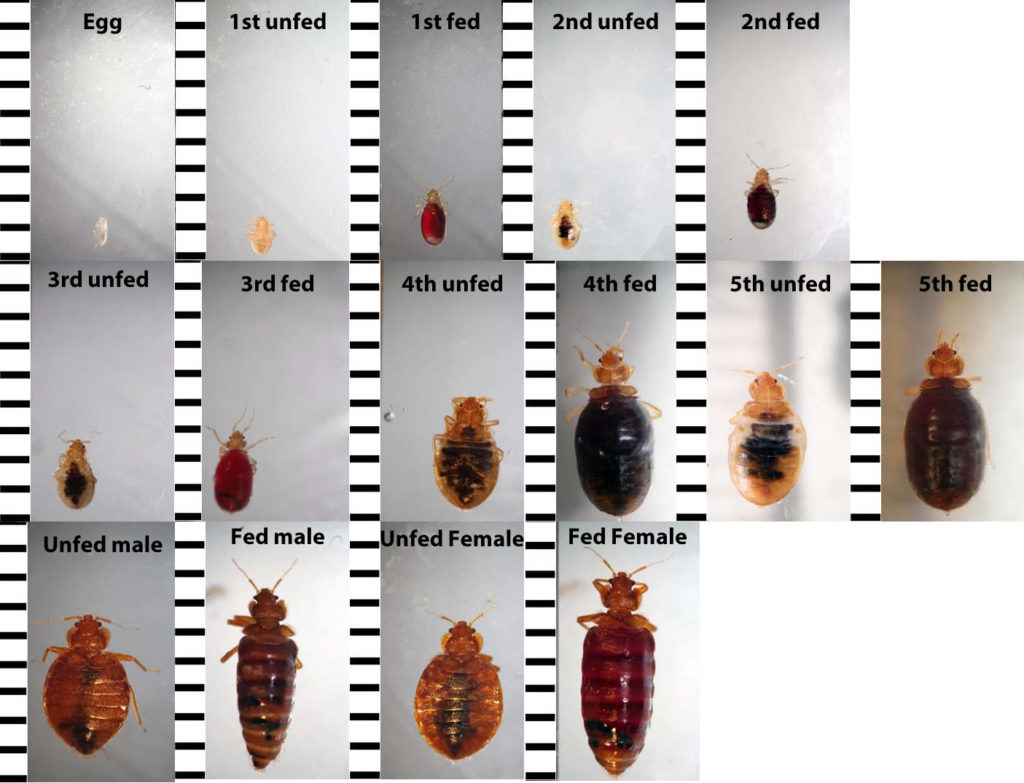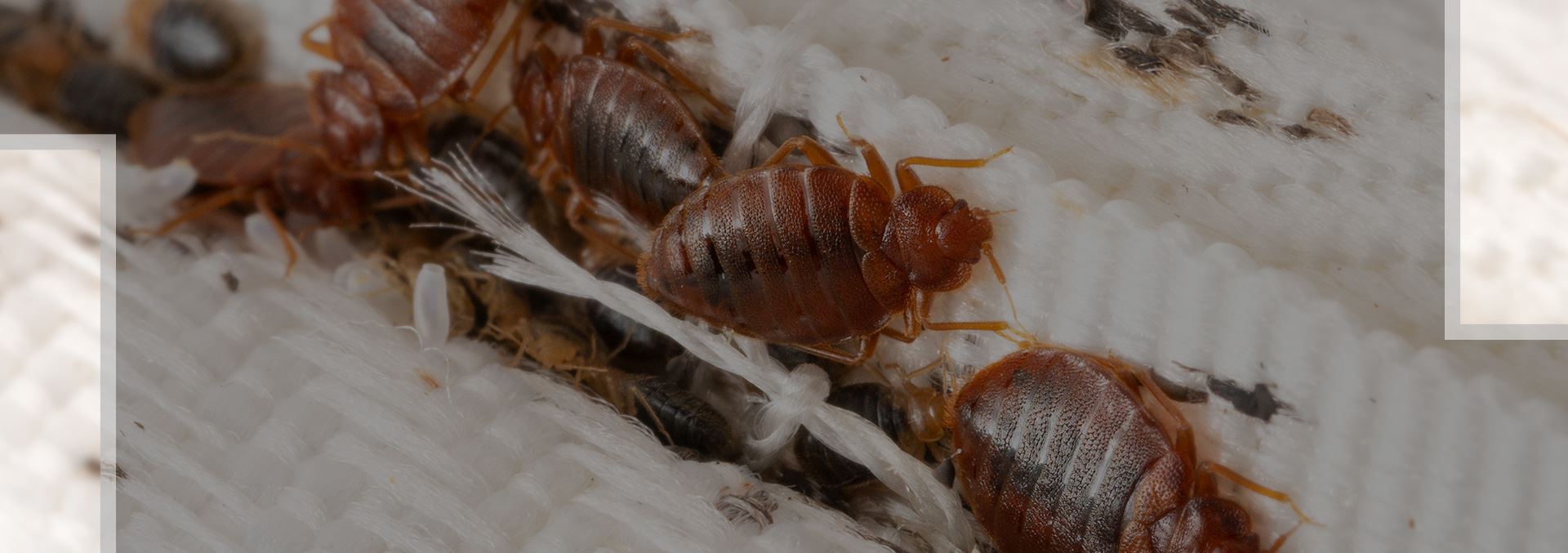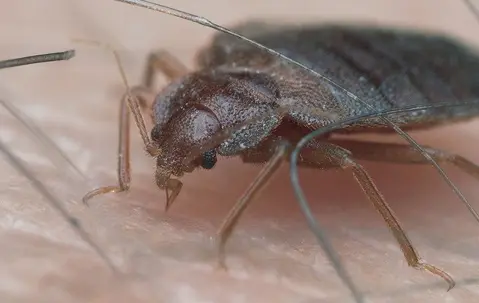Florida’s subtropical climate—characterized by steady warmth, ample humidity, and mild winters—allows bed bugs to remain active and reproduce continuously. In Palm Bay, a coastal city situated on Florida’s eastern shore, these elusive pests can make their way into homes or rental properties via luggage, secondhand furniture, or personal belongings. By the time residents notice itchy bites or small black flecks on sheets, bed bugs may already occupy multiple rooms, hiding in mattress seams, upholstery folds, or behind baseboards. This service page explains why bed bugs thrive in Florida, how to detect them, and why partnering with a professional bed bug exterminator is the most efficient route to reclaim a restful, bite-free interior.
Whether you manage a single-family house in Palm Bay or handle rentals near Grant, recognizing bed bugs early—and utilizing specialized, multi-phased treatments—protects occupants from deeper infestation, sleepless nights, and the cycle of do-it-yourself methods that often ignore unhatched eggs or newly hatched nymphs burrowed out of sight.
Why Bed Bugs Thrive in Florida
Mild Winter Temperatures
In colder regions, subfreezing seasons force bed bugs into dormancy or significantly cut breeding cycles. Florida’s gentle cold season rarely dips to freezing, giving bed bugs uninterrupted feeding and egg-laying indoors. Heated or air-conditioned interiors (65–85°F) further eliminate seasonal pauses, letting bed bugs progress through egg, nymph, and adult stages year-round.
High Mobility of People & Goods
Florida’s tourism, relocations, and secondhand marketplace (like used furniture sales) routinely bring suitcases or household items from various locations common carriers of bed bugs. In Palm Bay, short-term rentals or occupant turnover can inadvertently transfer bed bugs from one property to another if occupant or manager inspections are lax.
Multiple Hiding Spots
Bed bugs hide effectively due to their flat, oval frames, slipping under mattress seams, box springs, sofa cushions, or behind baseboards. They remain concealed by daylight, feeding nocturnally on unsuspecting hosts. Occupants often realize their presence only after bites appear or black droppings dot sheets, by which time bed bugs may span several rooms.
Rapid Reproduction
A single female bed bug lays multiple eggs daily, each hatching in about two weeks under Florida’s favorable climate. Nymphs mature in roughly a month, each laying new eggs if occupant or professional responses don’t disrupt them. Small colonies grow into extensive infestations quickly unless recognized and addressed early.

Telltale Signs of a Bed Bug Infestation
- Nighttime Bites or Welts
- Red, itchy welts on arms, legs, or the neck often in lines or clusters on exposed skin during sleep.
- Some individuals experience pronounced bite reactions; others show minimal signs, obscuring early detection.
- Red, itchy welts on arms, legs, or the neck often in lines or clusters on exposed skin during sleep.
- Dark Specks of Blood Stains on Linens
- Pinpoint black excrement flecks along mattresses, pillows, or sheets.
- Small rust-colored smears occur if bed bugs are crushed after feeding.
- Pinpoint black excrement flecks along mattresses, pillows, or sheets.
- Visual Sighting of Bed Bugs
- Adults measure 5–7 mm, apple seed–shaped, flattening between meals; they appear reddish-brown after a blood meal.
- Nymphs are smaller, pale, and seek tight seams in furniture or baseboards.
- Adults measure 5–7 mm, apple seed–shaped, flattening between meals; they appear reddish-brown after a blood meal.
- Eggs & Molted Skins
- Whitish, pinhead-sized eggs stuck to bedding seams or rough surfaces in furniture.
- Translucent exoskeletons from nymph molts confirm ongoing development cycles.
- Whitish, pinhead-sized eggs stuck to bedding seams or rough surfaces in furniture.
- Possible Musty Odor
- Significant infestations can release a mild, musty or sweetish smell from bed bug pheromones.
- Physical indicators like droppings, bites, or adult sightings serve as more concrete evidence than odor alone.
- Significant infestations can release a mild, musty or sweetish smell from bed bug pheromones.
- Occupant Complaints
- In multi-room buildings apartments, short-term rentals, or hotels residents may report repeated bites or sightings near bedding.
- Swift occupant or manager intervention halts infestation from spreading to adjacent rooms or units.
- In multi-room buildings apartments, short-term rentals, or hotels residents may report repeated bites or sightings near bedding.
Why Ignoring Bed Bugs Is Risky
Rapid Population Growth
Each female bed bug lays several eggs daily, each hatching in 2 weeks in Florida’s gentle cold season. Without occupant or professional steps, minor incursions swell into widespread outbreaks across multiple rooms, elevating occupant distress.
Sleep Loss & Anxiety
Bed bugs feed overnight, fueling occupant worry or insomnia. Families or guests frequently check bedding, fearing hidden nighttime insects. For rental owners, occupant dissatisfaction or negative reviews often follow if bed bugs endure.
Spread to Adjacent Spaces
In multi-room setups like apartments, condos, or short-term rentals bed bugs traverse occupant belongings or wall voids. A bedroom outbreak can soon permeate entire buildings if occupant checks or housekeeping remain partial.
Escalating Treatment Complexity & Cost
Addressing a small presence quickly might need localized insecticides or partial heat/steam. Delaying until bed bugs establish behind walls or multiple floors drives occupant displacement for entire-room heat or repeated chemical treatments, raising inconvenience and total bills.
Health & Reputational Repercussions
While bed bugs don’t usually transmit diseases, repeated bites cause itching and potential secondary infections from scratching. Renters or short-term guests near Grant may face occupant frustration or brand harm if bed bugs aren’t resolved thoroughly.

Why a Professional Bed Bug Exterminator Is Crucial
Detailed Property Examination
A bed bug exterminator inspects mattresses, furniture seams, baseboard edges, and behind décor for excrement flecks, eggs, or adult sightings. Some leverage canine detection to sniff out clusters. Mapping bed bug hideouts helps occupant synergy and ensures thorough exterminator coverage from eggs to adults.
Multi-Faceted Removal
Pros often blend vacuuming, steaming, chemical sprays, or entire-room heat to kill bed bugs across each life phase. Single-step occupant remedies like store-bought aerosols typically kill visible adults but spare hidden eggs or newly hatched nymphs lurking in cracks.
Heat Treatments
For entrenched or multi-room infestations, raising indoor temperatures above 120F kills bed bugs (and eggs) embedded behind walls, inside furniture, or in electronics. Occupants leave for a few hours while monitors confirm lethal heat saturating each corner with no chemical residues left behind.
Targeted Chemical Sprays & Dust
Residual insecticides or dust in mattress folds, furniture seams, or baseboards kill bed bugs crossing those spots after feeding. If occupant sightings persist, subsequent spot treatments or insect growth regulators hamper newly emerged nymphs. Professionals apply chemicals precisely, preserving occupant or pet safety.
Follow-Up & Occupant Synergy
Since eggs hatch ~2 weeks post-laying, occupant or exterminator re-check visits confirm newly emerged nymphs also meet lethal conditions. Occupants might encase mattresses, wash items on hot cycles, or discard heavily infested furnishings—ensuring thorough interruption of the bed bug reproductive cycle.
Typical Methods for Bed Bug Treatments
- Inspection & Infestation Size
- Technicians scan bedding, furniture seams, baseboards, or behind décor for droppings, eggs, or live bugs.
- Establishing how many rooms or floors are affected clarifies localized vs. entire-structure coverage needs.
- Technicians scan bedding, furniture seams, baseboards, or behind décor for droppings, eggs, or live bugs.
- Vacuuming & Steam
- Vacuuming promptly removes many visible bugs or eggs from surfaces, cutting immediate populations.
- Steam at ~200°F kills bed bugs on contact, especially in tight seams or deeper cracks, without chemical residues.
- Vacuuming promptly removes many visible bugs or eggs from surfaces, cutting immediate populations.
- Chemical Insecticides
- Residual sprays or dust along bed frames, baseboards, or furniture folds hamper bed bug travel after feeding.
- Insect growth regulators block nymph development, preventing fresh breeding waves.
- Residual sprays or dust along bed frames, baseboards, or furniture folds hamper bed bug travel after feeding.
- Heat Treatments
- Occupants usually leave 4–6 hours while heaters raise room temps to ~120–135°F.
- Effective for severe or multi-room infestations, destroying bed bugs and eggs thoroughly—no chemical left behind.
- Occupants usually leave 4–6 hours while heaters raise room temps to ~120–135°F.
- Mattress & Box Spring Encasements
- Zippered covers trap any straggling bed bugs in bedding, starving them if they can’t reach new meals.
- Occupants check covers for tears or new black flecks indicating infiltration.
- Zippered covers trap any straggling bed bugs in bedding, starving them if they can’t reach new meals.
- Hot Laundry & Clutter Reduction
- Occupants wash linens, curtains, or clothes on hot cycles, drying thoroughly to kill eggs or nymphs.
- Minimizing clutter denies bed bugs additional re-grouping corners post-treatment.
- Occupants wash linens, curtains, or clothes on hot cycles, drying thoroughly to kill eggs or nymphs.
- Follow-Up & Rechecks
- Eggs hatch ~2 weeks post-laying. Occupant re-check or second professional visit ensures newly emerged nymphs encounter lethal measures.
- Extra occupant synergy or additional chemical/steam usage cements occupant peace of mind.
- Eggs hatch ~2 weeks post-laying. Occupant re-check or second professional visit ensures newly emerged nymphs encounter lethal measures.
Service Area: Palm Bay & Grant
While bed bugs adapt widely across Florida’s mild winter climate, this page focuses on Palm Bay and the nearby community of Grant, both benefiting from occupant synergy plus professional extermination measures. Because Florida’s gentle cold season rarely disrupts bed bug cycles, occupant synergy plus specialized approaches remain vital for fully removing or pre-empting deeper infestations.

Why Choose Us
Florida-Tailored Solutions
We blend recognized bed bug control tactics—vacuuming, steam, insecticidal sprays, entire-room heat—with occupant housekeeping measures, suitable to Florida’s environment. By combining occupant synergy (like laundering on high heat, encasing mattresses) and advanced extermination, we attack bed bugs in each stage—egg to adult—rather than focusing solely on visible adults.
Detailed Assessments
Before deploying chemicals or heat, technicians thoroughly examine bedding, furniture folds, and baseboard edges for excrement spots, eggs, or adult bug sightings. Determining whether bed bugs occupy a single bedroom or multiple rooms shapes partial vs. entire-property coverage best suited for occupant needs.
Safe, Targeted Products
Professionals apply regulated insecticides or dust near bed bug hideouts—mattress seams, baseboards—limiting occupant or pet overexposure. For advanced or multi-room problems, entire-room heat kills bed bugs behind walls or in electronics, leaving no chemical residue.
Ongoing Guidance & Re-Checks
Because eggs hatch ~2 weeks post-laying, occupant re-check or follow-up visits confirm newly emerged nymphs also confront lethal exposures. Occupants might discard heavily infested items, launder fabrics on hot cycles, or encase mattresses—fully halting bed bug reproduction.
Rapid, Local Service
Serving Palm Bay and neighboring Grant, we understand occupant flows, short-term rentals, and Florida’s mild winter fueling bed bug expansions. Our proven methods plus flexible scheduling minimize occupant disruption while thoroughly eliminating bed bugs at each life phase.
Next Steps
Seeing unexplained bites, black flecks on sheets, or small, apple-seed–sized insects near mattress seams or upholstery folds? Contact us to learn more or schedule your service. Our bed bug treatments for Palm Bay and Grant unite property-wide inspections, multi-pronged extermination methods (steam, heat, insecticide), occupant housekeeping tips, and essential follow-up visits erasing bed bugs in each phase and barring fresh infestations.
Act rapidly to protect occupant comfort from ongoing bites, stop bed bugs burrowing deeper behind walls, and evade occupant frustration with partial do-it-yourself solutions ignoring eggs or newly hatched nymphs. Trust our Florida-based bed bug exterminator expertise to detect, remove, and discourage these parasitic insects, preserving occupant peace under Florida’s mild winter conditions where bed bugs otherwise feed and breed uninterrupted.
Maintaining a Bed Bug–Free Environment
After professionals dismantle bed bug infestations, occupant protocols keep them from reappearing:
- Regular Vacuuming
- Vacuum floors, rugs, or mattress seams weekly, discarding vacuum contents outside in sealed plastic.
- Interrupts any stray eggs or nymph clusters on surfaces.
- Vacuum floors, rugs, or mattress seams weekly, discarding vacuum contents outside in sealed plastic.
- Launder at High Heat
- Bedding, curtains, clothes should be washed in hot cycles, then fully dried on high heat.
- Kills eggs or nymphs clinging to fabrics after occupant travel or second hand purchases.
- Bedding, curtains, clothes should be washed in hot cycles, then fully dried on high heat.
- Mattress & Box Spring Encasements
- Zippered covers lock in any leftover bed bugs within bedding materials, starving them if they can’t feed.
- Occupants examine these encasements regularly for rips or black flecks denoting infiltration.
- Zippered covers lock in any leftover bed bugs within bedding materials, starving them if they can’t feed.
- Clutter Reduction
- Loose piles of clothes or open boxes provide extra corners for bed bugs to hide if reintroduced.
- Neat, minimal clutter reveals fresh droppings or adult sightings swiftly.
- Loose piles of clothes or open boxes provide extra corners for bed bugs to hide if reintroduced.
- Scrutinize Secondhand Items
- Used furniture or mattresses may harbor eggs or adults. Thoroughly vacuum or steam them before bringing them indoors.
- If suspicious, avoid or treat them proactively.
- Used furniture or mattresses may harbor eggs or adults. Thoroughly vacuum or steam them before bringing them indoors.
- Seal Cracks & Gaps
- Use caulk along baseboards, fix peeling wallpaper, or seal utility openings.
- Hinders bed bugs travel between rooms, especially critical in multi-unit properties.
- Use caulk along baseboards, fix peeling wallpaper, or seal utility openings.
- Monitor Post-Travel
- Bed bugs often stow away in luggage from infested hotels or rentals. Inspect suitcases, wash travel clothes on hot cycles.
- Early occupant diligence thwarts new bed bug colonies from taking hold at home.
- Bed bugs often stow away in luggage from infested hotels or rentals. Inspect suitcases, wash travel clothes on hot cycles.
Combining occupant vigilance like vacuuming floors, discarding heavily infested furnishings, laundering fabrics at high heat and specialized bed bug treatments if necessary ensures property owners in Palm Bay and Grant effectively counter Florida’s mild winter advantage for bed bugs. This occupant-professional synergy deprives bed bugs of hidden corners and stable breeding conditions, preserving occupant serenity and restful nights across each season.
